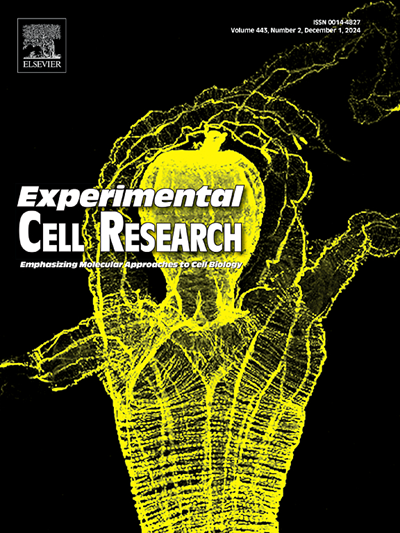MiRNA29a-3p negatively regulates ISL1–Integrin β1 axis to suppress gastric cancer progression
IF 3.3
3区 生物学
Q3 CELL BIOLOGY
引用次数: 0
Abstract
Insulin gene enhancer protein 1 (ISL1) belongs to the LIM homeodomain transcription factor family, which is closely related to the development of several cancers. We previously found that abnormally high ISL1 expression is involved in gastric cancer (GC) metastasis. However, the specific role of ISL1 and its regulatory mechanisms in GC metastasis warrant elucidation. In this study, we found that ISL1 is highly expressed in GC tissues and positively correlated with GC development, promoting cell migration and invasion in vivo and in vitro. Moreover, miRNA29a-3p can target ISL1 and thus inhibit GC cell migration. Furthermore, ISL1 upregulates ITGB1 by binding to its enhancer; nevertheless, ISL1–ITGB1 axis expression can be regulated using miRNA29a-3p. In GC cell nuclei, ISL1 and annexin A2 (ANXA2) form a transcriptional activator complex at the ITGB1 enhancer, thus promoting ITGB1 expression. In GC cell cytoplasm, the ISL1–ANXA2 complex synergistically activates matrix metalloproteinases, thus promoting cell migration. In conclusion, ISL1 is a potential therapeutic target for GC.
MiRNA29a-3p 负向调节 ISL1-Integrin β1 轴,抑制胃癌进展
胰岛素基因增强蛋白 1(ISL1)属于 LIM 同源域转录因子家族,与多种癌症的发生密切相关。我们曾发现 ISL1 的异常高表达参与了胃癌(GC)的转移。然而,ISL1在胃癌转移中的具体作用及其调控机制仍有待阐明。在这项研究中,我们发现 ISL1 在 GC 组织中高表达,并与 GC 的发展呈正相关,促进细胞在体内和体外的迁移和侵袭。此外,miRNA29a-3p 可靶向 ISL1,从而抑制 GC 细胞迁移。此外,ISL1 通过与 ITGB1 的增强子结合来上调 ITGB1;然而,ISL1-ITGB1 轴的表达可以通过 miRNA29a-3p 进行调控。在 GC 细胞核中,ISL1 和附件素 A2(ANXA2)在 ITGB1 增强子上形成转录激活复合物,从而促进 ITGB1 的表达。在 GC 细胞胞质中,ISL1-ANXA2 复合物协同激活基质金属蛋白酶,从而促进细胞迁移。总之,ISL1 是治疗 GC 的潜在靶点。
本文章由计算机程序翻译,如有差异,请以英文原文为准。
求助全文
约1分钟内获得全文
求助全文
来源期刊

Experimental cell research
医学-细胞生物学
CiteScore
7.20
自引率
0.00%
发文量
295
审稿时长
30 days
期刊介绍:
Our scope includes but is not limited to areas such as: Chromosome biology; Chromatin and epigenetics; DNA repair; Gene regulation; Nuclear import-export; RNA processing; Non-coding RNAs; Organelle biology; The cytoskeleton; Intracellular trafficking; Cell-cell and cell-matrix interactions; Cell motility and migration; Cell proliferation; Cellular differentiation; Signal transduction; Programmed cell death.
 求助内容:
求助内容: 应助结果提醒方式:
应助结果提醒方式:


